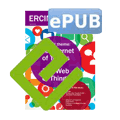
by Cees Links, Founder & CEO GreenPeak Technologies, www.greenpeak.com
Everybody talks about the Internet of Things, the IoT… but how is the IoT actually going to change our lives?
The Internet of Things is creating a new world, a quantifiable and measureable world, where people and businesses can manage their assets in better informed ways, and can make more timely and better informed decisions about what they want or need to do. This new connected world brings with it fundamental changes to society and to consumers. By sensing our surrounding environment, the IoT will create many practical improvements in our world, increasing our convenience, health and safety, while at the same time improving energy efficiency and comfort. The IoT will be a new source of wealth creation.
IoT devices can be classified in three categories: (1) wearables, (2) smart home devices, and (3) M2M devices. The first two categories are the most important for consumers. ‘Wearables’ are the devices that people carry with them, which usually connect via Bluetooth to a smart phone, and from there to the Internet. This category includes devices such as smart watches, fitness bands and devices to help people to live more ’mindfully’ – increasing the wearer’s awareness of how well they sleep, how much they move around, monitoring their vital signs, etc.
Smart home devices are also part of the IoT and usually connect to the Internet via ZigBee low power wireless communication and the home router. These include all domestic devices, from lights and light switches to motion sensors, thermostats, door locks and automated curtains. Via its WiFi connection to the router, the smart phone also becomes an online dashboard and control device for Smart Home applications.
The third category, M2M (Machine to Machine) devices, comprises devices that are directly connected to the cellular network, such as cars that can report their location (in case of an accident or theft), or vending machines that can call in when their stocks are running low.
Many households and businesses have thermostats, weather stations, smart lighting, security and electronic door locks, the majority of which are not currently interconnected. They are connected – but not to each other. The weather station does not provide information to the thermostat about the climate outside. The security system is not connected to the indoor motion sensors, nor to the electronic door locks (it does not automatically lock the forgotten back door when the inhabitants go out). In the future, all these systems will be interconnected, providing information to each other, and reacting accordingly. We are currently in an emerging state of the IoT, with individual vertical applications that operate as islands, and serve independent applications (such as security alarms, door locking, etc.). However, the real IoT will emerge when these applications cooperate, working together, and begin to use each other’s ’awareness’. That is when the true IoT avalanche will start.
The key component of the IoT - whether wearables or smart home devices - is not the sensor, but the application. Connecting the sensors is difficult, but extracting information from data is the essence. Useful information extracted from the data can coach people by reaffirming when things go as planned or by alerting or taking action if something goes wrong; and data analytics can be used to compare situations, to coach and to provide feedback to help make improvements. This is slowly starting to dawn on manufacturers and service providers alike. People are interested in the IoT if it helps them to improve aspects of their lives. Improvements are not achieved by sensors alone: a completely different way of thinking is required, and it will take some time for the new paradigm to be fully embraced.
Privacy and security are key, together with data ownership. Note, these are not IoT issues, but general internet issues that are amplified by the growth of new applications. These issues already exist for the internet of people, and industry and government bodies are slowly starting to recognize them and take action.
The growth of the IoT can be compared with the growth of the automobile industry. Picture the first cars hitting the road: there were no freeways, no road signs, no rules, no driving licences. Pedestrians did not know to get out of the way. Drivers did not know how to take turns at intersections. Neither drivers nor pedestrians understood the risks and liabilities, giving no consideration to liability and insurance.
We are currently at a similar stage with the IoT. Just as it took decades before all required infrastructure was in place around motor vehicles, it will take quite some time before it is in place around the Internet. Once I led the engineering team that successfully brought WiFi to the Mac laptop for Steve Jobs. After his team had achieved this, all others followed. Now WiFi is everywhere - but this took time and work. Similarly, in the context of the Internet and Internet of Things, there is a growing awareness that we need rules, training, legislation and enforcement. We are just starting to learn what might be needed.
The IoT will change the world in an even more profound way than has the Internet. If we ask our children today how the world existed before Internet, they are speechless. They have no comprehension of how people could communicate or even live their lives without the common place tools we have today. The same will happen with the IoT.
A decade from now, we will be dependent on the knowledge derived from the continuous stream of data from our wearables and our smart home devices, and we will have no idea how we managed the world and our lives before. We will be able to make better informed, more accurate and more timely decisions; and decisions that will improve our lives, save us money, and may even save our planet. The IoT will make the difference.











